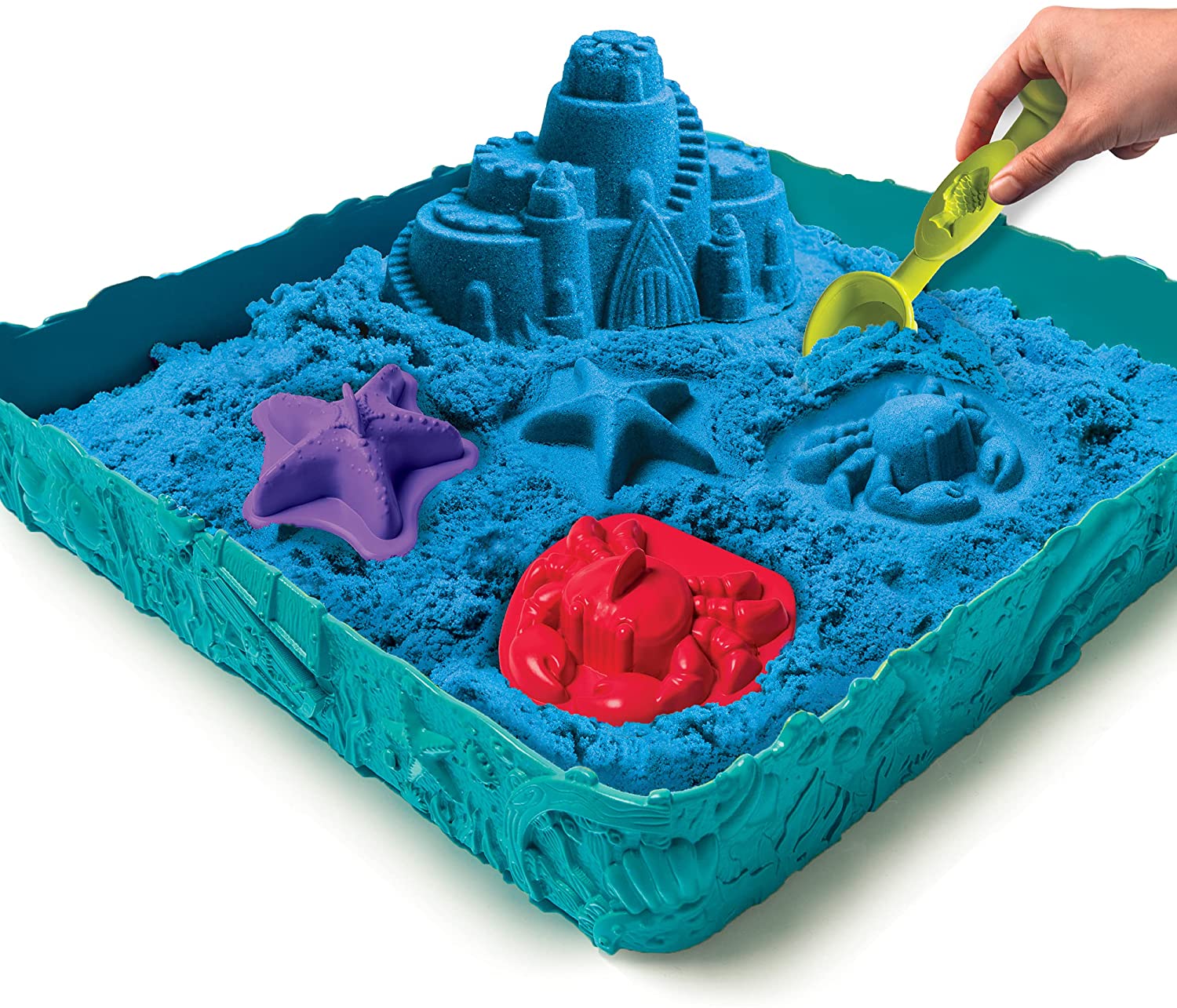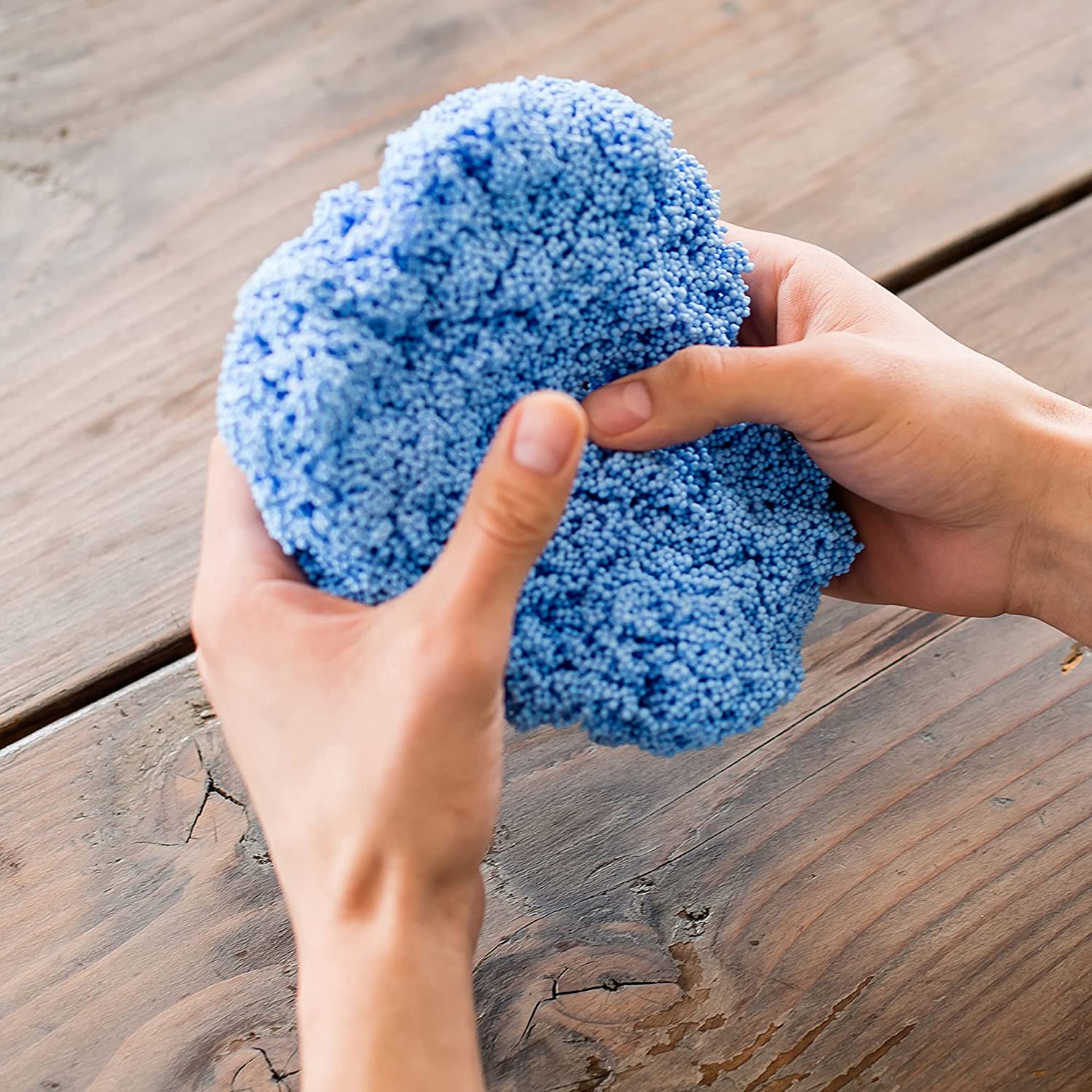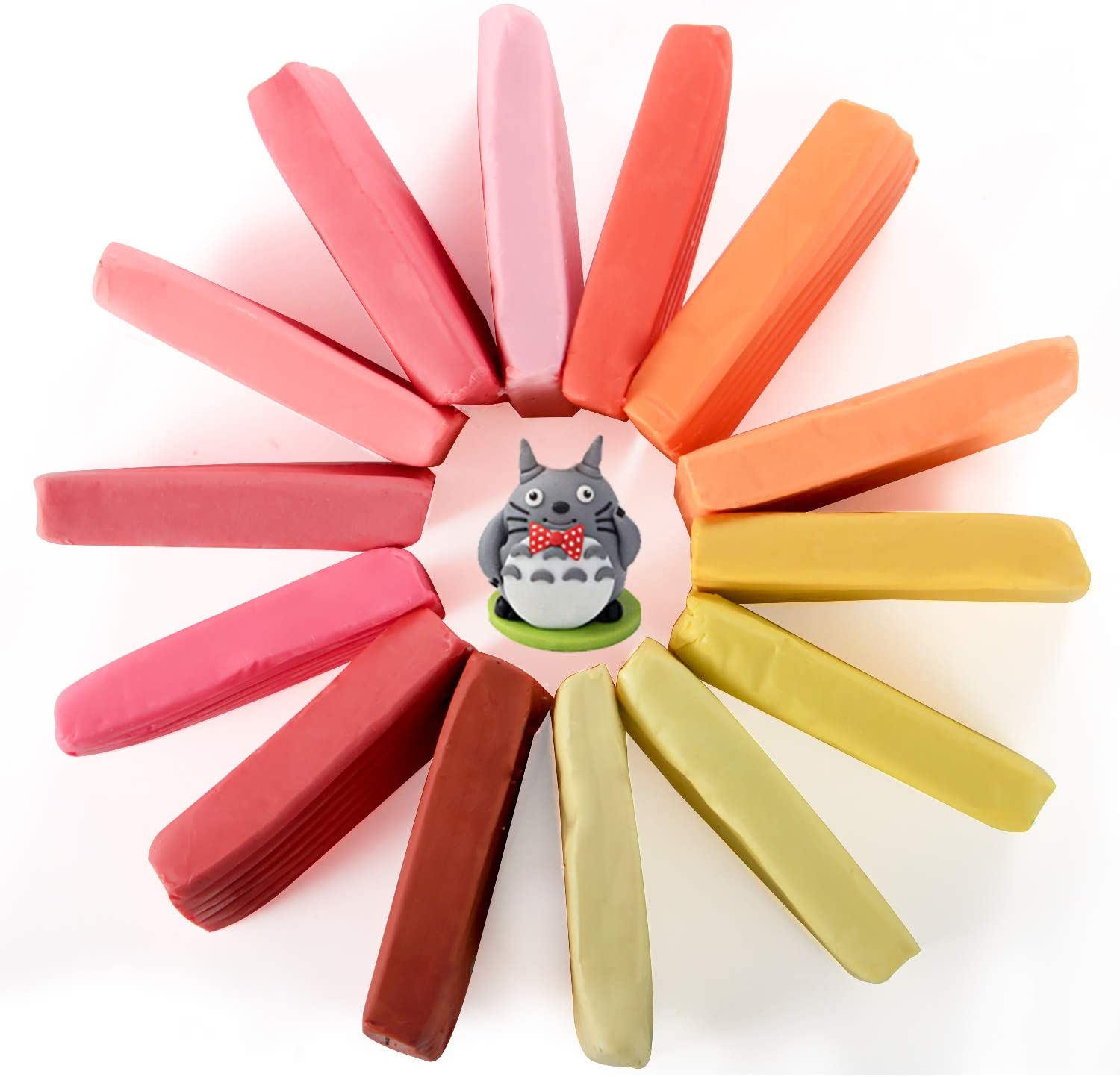Play-Doh products were first manufactured in the 1930s to clean the wallpapers in Cincinnati, Ohio, United States. Today, it is used as a modeling compound for kids aged 3 or above. Play-Doh is a soft putty, which is easy to make and a fun time pass for kids. These are certified non-toxic compounds as they contain no such ingredient in a major amount that can cause damage to the human body.
It is used for arts and crafts at-home activities. Not just the Play-Doh keeps kids busy for hours, but it is also a great activity for the developing finger muscles.
There is nothing better than your kids being busy with some creative activities. The love of the little ones for molding and sculpting until they exhaust themselves has made Play-Doh the most beloved “modeling compound” for many decades.
Ingredients
As per Hasbro, the current manufacturer of Play-Doh, the final product is a mixture of water, salt, starch-based binder, a retrogradation inhibitor, lubricant, surfactant, preservative, hardener, humectant, fragrance, and color.
Disclaimer: Some Play-Doh may contain wheat, which may trigger hypersensitivity in people allergic to wheat gluten. Never let your kid eat it!
What if Your Kid Accidently Ingests Play-Doh?
Before letting your kid play with it, make sure to educate them that Play-Doh is not food and is not intended to be eaten at all.
Store-bought products are generally non-toxic, yet they may cause choking if ingested. Other symptoms are unlikely to occur. Calm your kid by offering a glass of water to wash down the stomach.
If your kid has ingested a large amount of the batch, they are at the risk of developing some serious symptoms (like stomach upset or loose stools).
Ready-Made Play-Doh Alternatives
1. Kinetic Sand
Kinetic Sand is made when polymers are mixed with soft beach sand. It is the best option if your kids love building indoor castles, as it can be easily molded and sculptured. Because of the polymers used, the stretchable sand sticks to itself and is less messy.
Who Can Use It?
The kinetic sand is formulated for younger kids aged 3 years or older.
Why Should You Choose It?
If you are in search of a non-toxic play-doh alternative that has similar elasticity and molding capabilities as play-doh, you’ll love Kinetic Sand.
It is available in a variety of different colors and is easy to shape and mold.
Advantages
- Less likely to create a mess
- Easy to shape
- Non-toxic
Disadvantages
- Not made for children below 3 years
- Can get dirty easily
2. Play Foam
Play Foam is an alternative that doesn’t dry out even if it’s kept out of the storage container. Because of its many textures, kids will experience sensory fun.
Who can use it?
The Play Foam is only for children aged 3 years above.
Why You Should Choose It
The colorful, non-toxic play foam is pliable, stretchable, and can be molded and shaped easily. Hence, it is an ideal gift for your toddlers and preschoolers.
Playing with it will help develop your kids’ fine motor skills.
Advantages
- Easy to mold
- Provides sensory fun
Disadvantages
- Often leaves a sticky residue
- Difficult to clean
3. Polymer Clay
The denser alternative to play-doh is polymer clay. It is used for detailed molding. The best thing about polymer clay is that it never leaves sticky residues behind.
Who Can Use It?
The polymer clay is originally made for kids aged 3 years old and above. The adults can also use it for molding and sculpting.
Why Choose It?
The clay will not dry even if it’s not stored properly in an airtight container. To preserve your kid’s molding design, simply bake it at 275° for 15 minutes.
Advantages
- Extremely elastic
- Designed for detailed molding
Disadvantages
- Not suitable for children under 3 years
- Hands may get stained from their color
4. Slimy Sand
Slimy Sand is a non-sticky, stretchable, and expandable slime that is available in many funky colors like blue, pink, purple, and orange.
Who can use it?
The Slimy Sand is suitable for children aged 3 years old and above.
Why You Should Choose It
The nearly same alternative to Play-Doh is Slimy Sand. It is easy to shape and can help in developing and strengthening your kid’s motor abilities.
Advantages
- Super stretchable
- Offers a sensory activity
Disadvantages
- Leaves a sticky residue behind
- It can get dry a bit
5. Colorations Classic Dough
The Colorations Classic Dough is a soft stretchable product similar to Softee Dough and Play-Doh.
Who Can Use It?
This dough is made for kids aged 2 years old and above.
Why Choose It?
The Colorations Classic dough is non-toxic and safe as it is not likely to cause allergic reactions.
Advantages
- It can be mold easily
- Easy to clean
Disadvantages
- The skin may get stained from its colors
- Needs to be tightly packed, or else it will dry if left out of its container
Non-Toxic Homemade Play-Doh Alternatives
Homemade Play-Doh can be toxic or non-toxic. This entirely depends on the ingredients you choose to use. The most common ingredients of a homemade Play-Doh include a starch-based binder (such as flour), table salt, boric acid, soap, oily base, fragrance, and color. Boric acid is used to inhibit the growth of mold.
Following are some non-toxic homemade play-doh alternatives:
1. Cloud Dough
Ingredients
- Corn Starch
- Hair Conditioner
- Any Food Color of your choice (optional)
- Glitter (optional)
Materials
A spoon and a bowl for mixing
Directions
- In a bowl, mix starch and hair conditioner in a 2:1 ratio. Add the food color and glitter of your choice, if desired.
- Start mixing with a spoon, and then finish mixing it with your hands.
Storage
Store in an airtight container.
2. Kinetic Sand
Ingredients
- Craft sand, 1 cup
- White Elmer’s glue, 0.5 cups
- Dish soap, 2 tsp
- Cornstarch, 2 tbsp.
- Food Color (optional)
- Sand and Play-Doh toys (optional)
Materials
A spoon and a bowl for mixing
Directions
- Mix all the ingredients together. Stir well until all the materials are mixed.
- Start adding glue gradually and keep stirring thoroughly with a spoon.
- Knead the mixture with your hands.
- Add in your favorite food color if you want.
Storage
Keep it in an airtight container to maximize longevity to several weeks or even more.
3. Rainbow Oobleck
Ingredients
- 2 cups of cornstarch (change the quantity as per the desired consistency)
- 1 cup of water
- Food coloring (optional)
Materials
A spoon and a small pan
Directions
- Mix cornstarch by adding water gradually. Stop adding water once you can pick up a clump. Roll the mixture and divide it into several portions.
- Add different food colors to every portion and then put them all in a single pan.
Storage
Store in a tight container.
Educational Point of View
You can explain the behavior of Oobleck to older kids that it is a pressure-dependent product. It possesses the properties of both solid and liquid. If you increase the pressure, it will become thick or viscous (just like quicksand).
4. Yogurt Silly Putty
Ingredients
- 1 cup of plain yogurt
- ¾ cups of corn starch
- Food coloring (optional)
- Sprinkles (optional)
Materials
A spoon and a bowl for mixing
Directions
Combine all the ingredients – cornstarch, yogurt, and the optional food coloring/sprinkles. Mix well until the mixture is no longer sticky.
(You may add corn starch gradually if your mixture is still sticky. Or add yogurt if it’s dry)
Storage
It cannot be stored; hence, you can use it fresh only.
5. Aloe Dough
It cannot be molded or sculpted but is a fun dough to play with. It has a silly-putty-like consistency.
Ingredients
Same as cloud dough with the only difference of Aloe instead of hair conditioner.
- 2 tbsps. of aloe
- 3 to 4 tbsps. of corn starch
Materials
A spoon and a bowl for mixing
Directions
In a bowl, mix aloe and corn starch. First, mix it with a spoon and then knead the dough with your hands.
(If the mixture is runny, add more corn starch or some water if the dough starts drying).
Storage
Take a plastic bag and use it for storing aloe dough once you squeeze all the air out.
Final Thoughts
Play-Doh is a source of great fun and creativity, no matter whether you choose to make your homemade play-doh or try out one of the alternatives mentioned above in this article.
You can try DIY play-doh alternatives if you cannot find play-doh at a store or want to try a new different product to keep your kids busy for hours. Plus, you can make as much dough as your little one demands.





